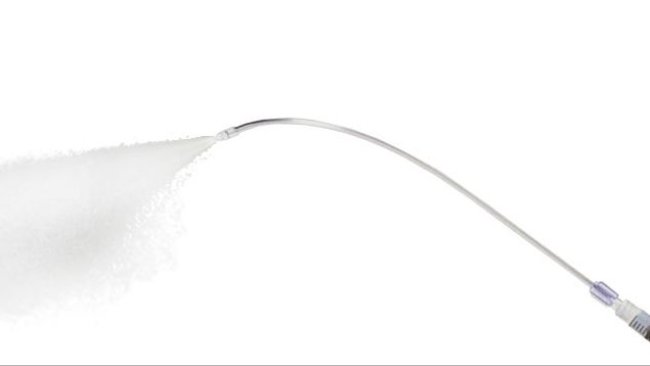
African Swine Fever clinical presentation in the field
What is the course of this disease in the field recently? Not always following the textbook description… Global swine professionals with field experience answer this and many other questions.
The pig sector events all around the world
Weekly newsletter with all the pig333.com updates
Swine industry news in your email
Pig health: news and articles on PRRS, PCV2, biosecurity, etc, Pig disease guide, atlas of pathology, clinical cases…
Biocheck.UGent is an independent, risk-based, scientific scoring system for assessing the quality of your on-farm biosecurity.
A visual and practical step-by-step guide on how to perform a necropsy on a pig.
All the information about ASF: how to recognize the disease, how it is transmitted, pictures of lesions, latest news, guides, etc.
Description of the most important diseases and conditions in pigs
Images of major swine diseases
Pig disease diagnostic tool
Definition for the most commonly used pig terms
Simulator that calculates the amount of drug to add to the water when using a flow dispenser.
Weekly newsletter with all the pig333.com updates
Pig Prices by countries. Pork production and trade. News of the pig market and the raw materials
The latest slaughter pig prices in the most important pig markets. Check the evolution of the historical prices in charts and in several currencies.
Latest quotations for the main commodities used in pig feed. Historical graphs with the pig price and estimated feed price.
Figures & trends in pig numbers, pork production and pork trade.
Global production and trade data for the most important raw materials
Weekly newsletter with all the pig333.com updates
Articles on nutrition and pig feeding, characteristics of raw materials and additives for pig feed. Prices of raw materials
Latest quotations for the main commodities used in pig feed. Historical graphs with the pig price and estimated feed price.
Technical sheets of the main raw materials and additives used in swine feed. They include a comparison of nutritional values from various sources, product
Global production and trade data for the most important raw materials
Definition for the most commonly used pig terms
Use this tool to diagnose problems with the feed conversion ratio. Click on the flowchart or on the buttons within the text to navigate through the different parts of the tool.
A biweekly newsletter with the latest developments in swine nutrition
Articles on genetics and pig reproduction: genetic improvement, genomics, artificial insemination, use of hormones
Compare production data, calculate the number of sow, nursery, and finishing spaces, and visualize your tasks on the work schedule by type of BMS.
Tool that allows you to calculate the replacement rate in your farm
Definition for the most commonly used pig terms
Use this tool to find out why your farrowing rate is less than ideal. Click on the flowchart or on the buttons found within the text to navigate through the different parts of the tool.
Weekly newsletter with all the pig333.com updates
Management, pig farm management, work planning in each production stage: management in gestation, grow finish, batch farrowing
Compare production data, calculate the number of sow, nursery, and finishing spaces, and visualize your tasks on the work schedule by type of BMS.
Tool that allows you to calculate the replacement rate in your farm
Definition for the most commonly used pig terms
Weekly newsletter with all the pig333.com updates
Design of facilities and equipment for pig farms: building design, climate control, feeding systems, etc.
Biocheck.UGent is an independent, risk-based, scientific scoring system for assessing the quality of your on-farm biosecurity.
Environmental Footprint Calculator along the pork value chain.
Definition for the most commonly used pig terms
Simulator that calculates the amount of drug to add to the water when using a flow dispenser.
Use this tool to explore which slurry management strategy best fits your situation. Click on the flow chart or on the buttons within the text to navigate through the different parts of the tool.
Weekly newsletter with all the pig333.com updates
What makes us stand out is the quality and independence of our contents. Find out about the authors who make it possible. Our goal is to generate a virtual community of advanced users in the sector.

Dr. Carmen Alonso was born in Madrid (central Spain). She graduated from the Complutense University of Veterinary Medicine in Madrid in 2003 with a postgraduate specialization in Swine Production Medicine from the Autonoma University of Barcelona in 2004. Following that, Dr Alonso worked as a swine practitioner in the Canary Islands, participating in a swine disease eradication project on 4 of the islands in this southeastern province of Spain (Tenerife Province).
Dr Alonso then moved her residence to the Spanish province of Catalonia in 2005 and joined the veterinary swine group at the Cooperative d’Ivars (a farmer owned cooperative of 40,000 sows). Catalonia is one of the most important swine production regions in Europe. She worked at this cooperative for 5 years in swine health and production consultation.
From 2010-2016, Dr. Alonso worked as a research assistant at the University of Minnesota while completing her MSc (The use of Air Filtration and its economic analysis for the entry of the PRRS virus into large sow herds within swine dense regions) and her PhD (Concentration, size distribution, and control of swine viruses associated with airborne particles).
In 2016, Dr. Alonso joined Elanco as Elanco Knowledge Solutions senior consultant in swine analytics. In 2017, Dr. Alonso created in Barcelona (Spain) her own business as an independent data analysis consultant for the swine industry merging with Dr. Carles Vilalta in 2020 and creating the consultancy firm Upnorth analytics.
Currently, Dr. Alonso works for Boehringer Ingelheim as a Senior Technical Manager within the IHM division (Integrated Health Management). She is responsible for the technical support and data analysis of precision livestock farming technologies applied in animal production.
Updated CV 01-Jun-2021

What is the course of this disease in the field recently? Not always following the textbook description… Global swine professionals with field experience answer this and many other questions.

A group of swine professionals will describe their field experience and perspective gained while fighting against African Swine Fever.

Intranasal and intratracheal inoculation routes as well as aerosolization with foggers are discussed.

Key considerations for the design of biosecure and practical pig loading chutes that will minimize disease transmission during the animal movement process.

We highlight different options for segregation of clean/dirty zones at the personnel entrance into the farm. This is where biosecurity starts. Keeping it simple and easy to follow increases the likelihood of an effective protocol.

Three videos that illustrate how to make an appropriate transition between several key clean and dirty zones.

Using a custom-made cart designed for drying and storage of heating lamps from farrowing units between uses to extent its working life.

Let's clarify what are the clean and dirty zones and its boundaries. A series of articles will discuss how to apply segregation principles to farm zones for the prevention of pathogen entry.

Choosing a smooth tile type with seamless gap material will not allow rodents to achieve a foothold that would facilitate their climbing ability

When was the last time that you disinfected your cellphone?

How to increase water consumption in piglets during the 2 to 3 days period after weaning using the piglet’s natural curiosity.

How can we monitor our program? Which pigs should be sampled? How many? How often should we sequence the virus/es present in our farms?

Four veterinarians talk about gilt acclimation: programs they put in place, how the immune status is measured and special management scenarios for introducing those gilts into the main herd.

The authors share their strategies in the face of tail biting outbreaks as well as on-going preventative measures.

What is the preferred exposure method?, and the best status of the incoming gilts?, should they be raised on-farm or purchased?, … Veterinary practitioners from Germany, North America, China, and Spain share their opinions.

The authors share their experience on tail biting risk factors identification as well as the production of non-docked pigs.
Welcome to 333
Connect, share, and interact with the largest community of professionals in the swine industry.
Celebrating 169945Users on 333!
Sign upAlready a member?





